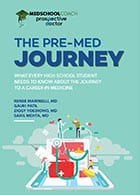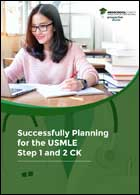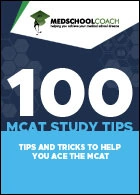
Table of Contents
If you meet a medical program’s basic requirements and their AdComs think you deserve a second look, you’ll be asked to fill out a secondary application (sometimes called a supplemental application). Secondaries usually consist of prompts that you’ll answer with short essays.
It’s the first exciting step in the process after submitting your primary application that suggests a medical school may be interested in what you can bring to their program. But keep in mind that many applicants will receive secondaries from schools that identify from transcripts/scores that they qualify based on minimum standards. It doesn’t mean a real person has taken the time to screen your primary application yet.
Just because almost everyone receives secondaries doesn’t mean they’re not important. AdComs use secondary applications to learn more about you and determine if you’re a good fit for their program.
You should write personalized responses to each program’s secondary essay prompts. However, many of these prompts fit into basic repeating categories, so it’s wise to pre-write some responses to common secondary questions. You can always tailor your responses to individual schools when it comes time to submit.
Keep reading for expert tips on how to write effectively, which essays to prioritize, and how quick your timeline may be. By following these tips, you can effectively showcase your strengths and interests to medical schools and increase your chances of being accepted.
Want expert help to ace your secondaries and med school interviews? Join the 92% of our clients who get into med school.
Secondary Essays for Inspiration
Below, I’ve provided four medical school secondary essay examples. They cover a wide range of subjects and are all real-life examples from our coaching clients, and each student was later accepted by the requesting medical program.
Prompt: From your list of "most meaningful experiences" on the AMCAS application, choose one that has been the most formative in terms of your desire for a career in medicine. Why did that experience have such meaning for you in your decision-making process? (200 words or less)
Essay: I worked as a medical assistant at a clinic in Los Angeles, which required negative COVID-19 results before surgical procedures and visitation. Because they did not accept at-home kits, there was a high demand for tests from nearby facilities. To help address this gap, our clinic offered rapid antigen and PCR tests. Because of the strict timeline the hospital required, many patients urgently needed their results to make the deadline for surgeries or to visit their critically ill loved ones. Knowing how anxiety-inducing this process can be, I donned my N-95 mask, face shield, gown, and gloves between appointments to assist as many walk-in patients as possible, even on our busiest days. I served many patients from diverse cultures, translating for Mandarin patients and using basic Spanish to communicate with those who spoke little English. The relief that spread across their faces as they heard their mother tongue was incredibly rewarding to see. This experience emphasized the importance of compassion and culturally tailored care to improve health outcomes and patient empowerment. With this knowledge, I aim to become a physician who can address systemic inequities by providing personalized care and advocating for underserved patients.
Prompt: Describe your identity and how it has impacted the development of your values and attitudes toward individuals different from yourself, and how this will impact your interactions with future colleagues and patients. (2500 characters)
Essay: Growing up, I traveled to India during summers to visit my family. Living in India for months at a time allowed me to understand the rich history of my ancestral homeland, Hyderabad. Unlike other parts of India, Hyderabad historically saw collaboration between Hindus and Muslims. They set aside their differences to live peacefully and build long-lasting monuments, such as the Charminar, symbolizing the value of tolerance on which Hyderabad was established. I experienced firsthand how coexistence between Hindus and Muslims persists today, as my family tailor and my apartment watchman have Arabic names and practice Islamic traditions. Recognizing this aspect of my heritage informed my identity as someone who celebrates diversity and understands its importance.
Upon returning to the U.S., I had a new appreciation for the values of diversity and acceptance, which I now noticed in my hometown as well. Although the people in my community had our differences, we assisted one another during difficult times. Whether it was shoveling driveways during snowstorms or babysitting children of our working neighbors, we could count on the people living around us to understand our needs and support one another. The values I learned from my neighbors continue inspiring me to behave altruistically and help those in need whenever possible.
My experiences reflect the richness of my life as well as the dual nature of my identity. I embody diverse values because I am both an Indian with deep ties to centuries of history and tolerance and an American with compassionate attributes. Throughout my undergraduate years, I delivered meals at food banks, served underprivileged groups and clinics, and treated patients experiencing multiple medical comorbidities as an EMT. By taking these actions, I aim to apply the diverse aspects of my identity in my life and help others overcome the challenges they face.
As a physician, I hope these core values will meaningfully shape my interactions with colleagues and patients. I will work alongside colleagues and staff to collectively improve patient outcomes. With my patients, I will act compassionately and dedicate myself to addressing their needs through high-quality care. Witnessing different parts of the world, learning to appreciate different backgrounds, and selflessly contributing to others’ health will serve me well as I work toward these goals.
Prompt: Please briefly discuss your research experience. (500 words max)
Essay: Our current study investigates activating transcription factor 3 (ATF3) as a biomarker for spinal cord injury and stroke. We found specific induction of ATF3 in rodent CNS neurons and significant increase in human serum ATF3 within one day of injury or stroke. ATF KO mice also had worsened neurological outcome post-injury, suggesting that ATF3 has some neuroprotective function. As a staff research associate, I use tissue samples to examine the expression of ATF3 on an individual cellular level. To determine the correlation between ATF3 levels, AIS score, and AIS improvement of the SCI patient population, I collect blood samples to quantify biomarker levels. Preliminary data from our ongoing study also demonstrates a positive correlation between serum ATF3 and injury severity in rodents and humans. To design experiments and present my findings, I use analytical skills and practice effective communication.
In undergrad, our lab focused on the nature and function of fear. One challenge in treating PTSD is understanding why some individuals develop disorders while others do not. Using stress-enhanced fear learning procedures, we studied fear-learning as well as voluntary alcohol intake in rodents. The ability to identify potential factors that promote susceptibility will serve as a valuable tool to examine proposed risk factors of PTSD and work toward preventing and reducing the severity of certain mental illnesses. In this role, I strengthened my benchwork, animal handling, and critical thinking skills.
I also worked as a research assistant in a developmental psychology lab at UCLA. Project PEAR investigated executive functioning by assessing how children sustain attention and persist during challenging tasks. I helped run EEG and behavioral sessions, during which I instructed children on tasks while measuring brain activity. The CARE study examined why certain children have more difficulty managing their worries and fears, with the goal of discerning more effective coping mechanisms. I coded audio and video to identify strategies for teachers and parents to use in promoting positive development. Through this experience, I practiced working with children and nurtured my compassion.
Prompt: The Medical College of [LOCATION] is committed to educating health professionals who are dedicated to improving health equity across the diverse populations we serve. Share with us what you have learned or how you have grown through working with or serving people from cultural backgrounds or groups different than your own. How do you believe you can contribute to improving health equity or reducing health disparities as a physician? (2000 characters)
Essay: I can contribute to improving health equity because I have a passion and skillset for caring for persons with disabilities. When I was a freshman, my grandma with Alzheimer's moved in, and I started to care for her. While caring for her, I learned new communication skills to keep her safe and happy. Initially, it was hard to see her reckon with the side effects of dementia, but I learned to accept her changes by forming new connections and appreciating the person she has become. Caring for my grandmother showed me the positive impact of caring for others, so I applied for a supervisor role in an assisted living facility, where I have helped over 50 residents with varying disabilities. I have worked with nonverbal residents who need assistance in every aspect of life, along with independent residents whom I help with social skills by assisting them in engaging with the community at men's groups, book clubs, and part-time jobs. I ensure the well-being of each resident by finding unique ways to connect and communicate with them. Through my experiences with these marginalized individuals, I have noticed an overarching issue of accessibility, whether for medical care, parking, or community engagement. I have encountered people who hold the misconception that nonverbal individuals are unable to communicate effectively. In such situations, I actively assist the staff in understanding the unique communication style of my resident or relay their response. I have also noticed that many people are generally uncomfortable around persons with disabilities. This can lead to implicit bias and them receiving substandard care. As a supervisor, it is important for me to speak up for my residents to ensure they get the accommodations they need and to help medical staff become comfortable working with them. My demonstrated ability to genuinely connect with and care for persons with disabilities is a valuable skill set and area of interest that will help improve health equality as a physician for persons with disabilities.
10 Expert Tips and Guidance
There’s a good reason for secondaries, and there are ways to increase your chances of getting an interview invite and eventually a spot at the med school of your dreams. Let’s talk about some of my top tips for secondary application essay writing.
Read 84 real-life secondary essays that helped students get accepted to med school
1. Pre-Write Common Responses
Before you receive secondaries, draft up some compelling answers to common secondary questions. Don’t submit these pre-writes word for word, but you can still save time by having something to edit instead of writing a response from scratch.
Check out the most common secondary questions (plus my tips on answering them) later in this article.
2. Read the Instructions Carefully
Pay attention to the specific requirements for each secondary application. Each school has different character limits, submission deadlines, and values that you should know before you begin writing.
Some schools may have specific essay prompts completely separate from what was on your AMCAS, while others may ask for additional information about your experiences or goals that you already discussed on your AMCAS.
3. Prioritize for the Best Results
First, I would write the secondaries that are due earliest — probably the first secondaries you receive or supplementary essays from schools with stricter deadlines. (Some med schools in California, for example, have strict 15-day deadlines.)
Next, I would tackle those secondaries that you think are short and easy (e.g., no essay prompts or maybe one very short essay).
Then, move on to your top-choice schools. If there is a secondary that has a really tough question, come back to it with a fresh mind at a later time.
4. Start Early
Secondary applications can take a significant amount of time to complete, so it is crucial to start working on them as soon as possible.
You need enough time to thoughtfully complete each application and have someone proofread it without feeling rushed or stressed.
5. Tailor Your Responses
You may be tempted to copy and paste your responses from one application to the next, but you must tailor your responses to each school.
Show that you did your research and are genuinely interested in attending that particular program. Demonstrate comprehension of their mission statement, unique student organizations, or clinical and research opportunities on campus.
6. Proofread!
As with any written communication, you must proofread your secondary application for spelling, grammatical, and formatting errors. A well-written application can make a strong impression, while a poorly written one will harm your chances.
I recommend editing and proofreading your essays yourself and then giving them to someone you know and trust to give them one final proofread.
7. Turn It In Quickly But Not Too Quickly
You typically want to submit a secondary within two weeks of receiving it. If the school gives you a submission deadline, try to submit at least two or three days early.
However, don’t sacrifice quality for speed.
8. Take a Deep Breath
You may feel like a bunch of medical schools suddenly inundate you with applications all at once. You are now looking at a stack of 20 applications, each with 1-6 essays on it.
If you plan ahead and pre-write your essays, though, you can avoid feeling too overwhelmed. Ignore the pile of secondaries and just work on one at a time. Get a jump start on your secondaries to avoid the stress.
9. Avoid Answering Questions Generically
If you get vague questions like, “Why do you want to come here?” you may feel like answering vaguely, “Because it’s a medical school! Why else?!”
Instead, get specific, do your research on the school, tailor your responses to that school, and add a personal flair that helps your secondary stand out.
(Generic responses are the primary reason you should avoid asking ChatGPT to write your answer — not to mention the shifting ethics — although chatbots can help in the editing process.)
10. Avoid Getting Frustrated If You Already Answered a Question
Some secondaries ask you to elaborate on experiences you’ve listed on your AMCAS application, or the supplementary may repeat a question without acknowledging you ever answered it at all.
You can only give so many answers to the question, “Tell us about your most important activities.” Instead of getting frustrated, consider how lucky you are to have gotten a secondary where they want to hear more from you. That’s a good sign you’re being strongly considered for admission!
Common Questions and Prompts
There are specific questions you may commonly be asked in secondary applications. Each medical school has a different process, but there are many patterns.
The number of secondary essay prompts from any given medical school varies wildly. Some schools may have 1-2 prompts, while others may require 10 or more.
The length of your response will also vary. Some prompts allow 300-word limits while others allow up to 500-1,000 characters.
Carefully read and follow the prompts provided. Don’t recycle without adapting. Tailor your responses to meet the school’s specific requirements. Stand out with unique details, personal experiences, and demonstrations of your growth and readiness to be a physician.
Below are some common prompts and questions I see a lot on secondary applications. Knowing what to expect and how to answer them will help the process go faster while improving your chances of getting an interview invite.
Why do you want to come to [MEDICAL SCHOOL]?
Ah, the dreaded “Why us?” question. Hopefully, my tips below will help you get excited to answer this common prompt.
First, research a school’s website to see what they think they offer, but your response should not directly copy and paste from there.
Instead, use their words as inspiration. Relate back to your experiences and how that fits in with the school you’re applying to. Show that you’ve done your research and that you can contribute to this school’s mission statement.
Here are a few recommendations for approaching the “why this school” question:
- Get specific. Highlight unique programs, research focuses, clinical training opportunities, student organizations, or faculty members at this school that appeal to you.
- Exhibit your shared values. Explain how the school’s mission and values align with your own. This will show that you have a genuine connection to the school and are a good fit for their community.
- Name drop (sort of). Mention any connections you have to the school, but be modest. This could be a personal connection, such as loved ones who graduated from the school, or a professional connection, such as having a physician affiliated with the school as a mentor. Make sure it’s authentic, as the person you mention will likely be asked to confirm the relationship.
This is also great research to do prior to an interview, as it will likely come up during that process as well.
Can you describe a challenge you have overcome?
A lot of medical students say, “I’ve never had a challenge.” While it may be true that you didn’t grow up unhoused, surely your life has had some hiccups. It’s unhelpful and probably untrue to say you never experienced or overcame a challenge.
That said, don’t overplay the time you broke your little toe and couldn’t get to class on time. Steer clear of unethical or insensitive examples.
Strong examples of a challenge you overcame may include:
- Mourning a death in the family or enduring a family health crisis.
- When you had to adjust to a new life outside of the home.
- When your sibling was going through depression and you had to help them.
- Getting a poor grade in college and working to improve.
- Turning around a campus organization that was on the brink of failure.
- Being a first-generation college student or first-gen med school applicant.
- Overcoming stigma from your neighborhood of going away to college.
- Navigating immigrant status while applying to college or med school.
Here are my recommendations for the overcoming-a-challenge question:
- Keep it interesting. Boring writing gets looked over, and you want to stand out.
- Demonstrate growth. Show that these challenges have grown you into who you are today. These are challenges you overcame, not ones you’re still wallowing in.
- Connect it back. Relate what you’re saying to things you’ve already done or genuinely want to do in your future career.
- Follow instructions. I’ll say it again — give the school what it’s looking for, not tangents and non-sequiturs.
What will you contribute to this university?
Diversity is strength — in all its forms. Your ethnicity can undoubtedly be one form of diversity in a student body, but there’s so much more. There’s socioeconomic diversity, age diversity, unique personal experiences that make us who we are, and diversity of thought.
Because racial and gender diversity aren’t considered as strongly in medical school admissions, based on a 2023 SCOTUS ruling, the ways your secondaries may ask about diversity may look a little different. In general, the best rule of thumb is to consider what distinguishes you as an applicant. How will you contribute to the university’s school of medicine? What makes you unique?
What about diversity in your field of study in college? In your interests? In your musical talents? Or in your computer programming skills? Do you come from a unique background in any way?
Read Next: How to Write the Diversity Secondary Essay for Medical School
If you really cannot think of a single thing that sets you apart, you may be in the wrong field. There is something interesting about you. Find it, and write about it here.
Who is the most influential person in your life?
This sort of question should be easy to answer. Of course, you can choose a parent or relative, but you can also think outside the box and choose a teacher or a professor. I don’t recommend choosing a celebrity or someone you have never met.
It’s not the particular person you choose that’s important. It’s how this person influenced you to be the person you are, especially if they helped you want to be a future physician.
Here are examples of what to write and what not to write:
- It will get you nowhere if you write, “My dad is important to me because he was a doctor, and he showed me what good patient care looks like.” [This makes the reader think, “Okay, the applicant’s family has a healthcare background, but this seems a bit cliche and irrelevant without context.”]
- Instead, you could write, “My dad showed me from an early age what it means to take care of people.” [This makes the reader think, “How did he show you?”] “Not only is he a well-respected doctor in the community,” [Reader: “So this applicant has healthcare in his blood.”] “…but he also shows his care for others through volunteer work.” [Reader: “Oh, he and his family do non-profit work.”] “He often brought me along to volunteer with him at a pop-up clinic, where I saw the dignity he conferred to others…” [Reader: “Giving underserved communities dignity is important and natural to him.”] And so on…
Can you tell us more about the research you conducted?
This is a straightforward question in which you can discuss your most significant research activities.
But you have to give the reader a framework in the first few sentences. Show them the big picture of your project or lab without bogging the paragraph down with nitty-gritty details.
- Do not start a paragraph with contextless jargon: “I studied receptor RLAJKNCH-r897, which showed that there was no uptake in expression when compared to JLKASN-8343 when exposed to methyl-alpha-dioxide.”
- Do write in this style: “The purpose of our research was to understand how toxins affect cells, which in turn could be used to eventually develop novel drugs. In particular, I studied…”
What is your most important extracurricular?
Try not to repeat yourself from the Work & Activities Section. Don’t be annoyed by these questions, even though it may feel like you already answered them on the AMCAS.
There are a few approaches to answering this question. If a single activity really is most important, and you already wrote about it as one of your three most meaningful experiences on your AMCAS, you can simply write about it again in more detail.
If there is something dominant in your life that you weren’t able to discuss on the AMCAS, write about that. For example, if you are a classical musician on the side, a prolific actor in the community, or the area’s top chess player, discuss it.
I would avoid writing about a shadowing experience. Did following around a doctor really change your life? If it truly did, talk about it some, but don’t force it.
Why did you take a gap year(s)?
Be honest and hopeful. Good reasons to take a gap year include:
- Building up your finances.
- Bolstering your GPA with a post-bacc.
- Retaking the MCAT for a higher score.
- Gaining new experiences (non-medical).
- Getting more clinical, research, or leadership experience.
- Reapplying after not getting into medical school (as long as you’ve grown as a future physician in some way).
Talk about how you grew as a person and potential medical student during that gap year. If you traveled the globe, don’t say “I traveled.” Explain how traveling changed you for the better. If you retook the MCAT, don’t say, “I kept trying until I got the right score.” Explain how you grew while studying and preparing.
Read Next: Applying to Med School as a Non-Traditional Applicant
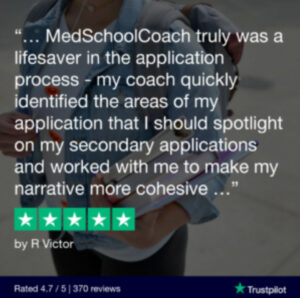
Is there anything else you would like us to know?
This question is challenging, but think about your best qualities — your most unique traits. Have you been able to talk about those characteristics? If not, here’s your opportunity.
Don’t bore the admissions board with high school stories or irrelevant anecdotes. Instead, exhibit your strength as a prospective med student, your cultural competency, gap year activities if applicable, and your value to the school and to the medical field.
Most of these prompts say the following outright, but I’ll say it here: Don’t reuse your medical school personal statement.
What are your long-term goals?
You don’t need a chosen specialty or fellowship to write about it here. AdComs expect these choices to grow and morph as you actually attend med school.
Instead, you can say you are leaning towards X and Y because you have been exposed to them in the past. Or you know you love working with children, and so you’d love to do pediatrics.
Also, don’t be afraid to discuss public health, public policy, or more academic or administrative goals. Med school isn’t just for practicing doctors. Physicians can change the world in many ways.
Brainstorm how your past experiences fit into your future goals. If you have participated in global health trips, you may want to mention that and say you eventually would love to do international healthcare work.
As always, research each specific school to ensure your long-term goals align with its mission.
Read Next: Common Medical School Interview Questions (With Sample Answers)
Should I Prewrite Secondaries?
Yes, you can and should prewrite some common secondary essays. It’s worth it to take the initiative and look up common essay questions or last year’s prompts. For context, of the 27 secondaries I filled out when applying to med school, 20 had prompts identical to the prior year.
Once your primary application is submitted, some time passes (between one day and five weeks) before that AMCAS application is verified and sent out to your list of schools, and then they send secondaries. That time does not need to be wasted time.
The sheer number of secondary applications can be overwhelming, but with a little preparation, you can get ahead of the crowd. Don’t get lazy and hastily submit subpar secondaries. I recommend prewriting a few essays that demonstrate your strength as a candidate.
Of course, the common secondary questions above are a great starting point. But you could even find the prompts for the past year and sometimes even the current year somewhere on the Internet.
If there’s a school whose secondary you really want to nail, but you haven’t received a secondary yet, you may be able to find common secondary questions in Prospective Doctor’s Secondary Essay Prompt Database. Also, StudentDoctor.net’s school-specific discussions also always post the secondary essay prompts on its forum.
When to Send In Secondary Essays
I recommend that you complete and submit your medical school secondary applications as soon as possible, as most schools make admissions decisions on a rolling basis.
Good rule of thumb: Submit to the strictest med schools first (many California programs have hard 2-week deadlines, so aim for 9-12 days after receiving secondaries), then everyone else within 2 weeks of when you received your secondaries. Don’t wait until the last minute.
Give yourself enough time to:
- Check the unique requirements for each school.
- Carefully complete each secondary application.
- Tailor your responses to each school.
- Proofread with someone you trust.
- Submit at least 2-3 days before the deadline, if possible.
Prioritizing the completion of your secondary applications, managing your time well, and meeting deadlines will demonstrate your commitment to the medical school admissions process and increase your chances of being accepted.
FAQs
It is not advisable to reuse medical school secondary essays from a previous application cycle. To improve your odds the second time around, you have to show schools that you’ve grown as an applicant. Include any new experiences or qualifications you’ve earned since your last attempt.
Think about it — what good is resubmitting an essay that wasn’t successful the first time around? Rewrite it if you want to boost your chances.
Also, remember that the schools you are applying to this time around may have different essay prompts or may be looking for different information in their secondary essays.
Yes, you can reuse secondaries for multiple schools, but be careful. Adhere to each school’s specific guidelines and values.
Also, ask yourself, “Is my answer properly answering this prompt?” Two schools might be asking similar questions, but they may be worded differently, requiring two different versions of the same answer. For example:
- What makes you unique? How will you contribute to our school’s medical community?
- Are there any special experiences, unique factors, or other information that would help the admissions committee in evaluating you?
Remember that each medical school has its own mission, values, programs, and opportunities. Be sure that your essays highlight how you align with and will fit into each school’s specific community.
Getting a secondary is a good sign, but it’s not a guarantee you’ll get accepted. It can indicate you’ve moved past the first round of screening. However, some schools have no screening process and may use secondaries as a fundraising mechanism just to drum up some more application fees.
Generally, if you have already chosen schools you’re a good fit for based on candidacy strength (e.g., MCAT scores, GPA), you’ll probably get multiple secondaries.
Not all applicants will receive secondary applications. For many schools (but not all), not receiving a secondary means you’re not being considered. (Pro tip: Check your spam folder to see if you missed an email.)
Create a master document or spreadsheet to track secondary requests, common prompts, and your submission deadlines. Within this document, formulate high-quality responses to common secondary questions — before you even receive secondary requests.
Once you start getting secondaries, make a calendar or chronological to-do list within the document, detailing when you need to work on which supplementary applications. Prioritize secondaries from schools you’re most excited about. Leave time at the end for proofreading.
If they’re asking, you have to answer, even if it requires repeating.
However, do not copy and paste anything. If you didn’t have enough space on your primary to write everything you wanted, use this secondary application opportunity to supplement (not copy) what you have already written.
If there are only basic questions and no medical school secondary essay prompts, simply fill out what is necessary and submit.
Get Help Writing and Editing Your Secondary Application Essays
The most important thing in these essays is not what you are choosing to do, but how you explain your decision. There’s no “correct” choice. AdComs are looking for self-awareness, confidence, and a logical connection between your past experiences and your future goals.
Get more pro tips, editing help, and proofreading from the physician advisors at MedSchoolCoach! Our team has all gone through the med school secondary process, and we’ve since helped hundreds of applicants just like you get to the next stage.
Schedule a free consultation with our enrollment team to see if we’re a good fit for helping you achieve your medical career dreams!
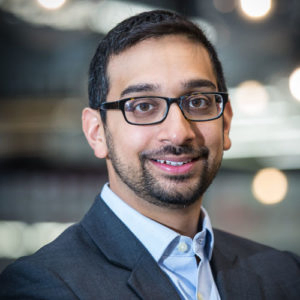
Sahil Mehta MD
Dr. Mehta is the founder of MedSchoolCoach and has guided thousands of successful medical school applicants. He is also a practicing physician in Boston where he specializes in vascular and interventional radiology.



